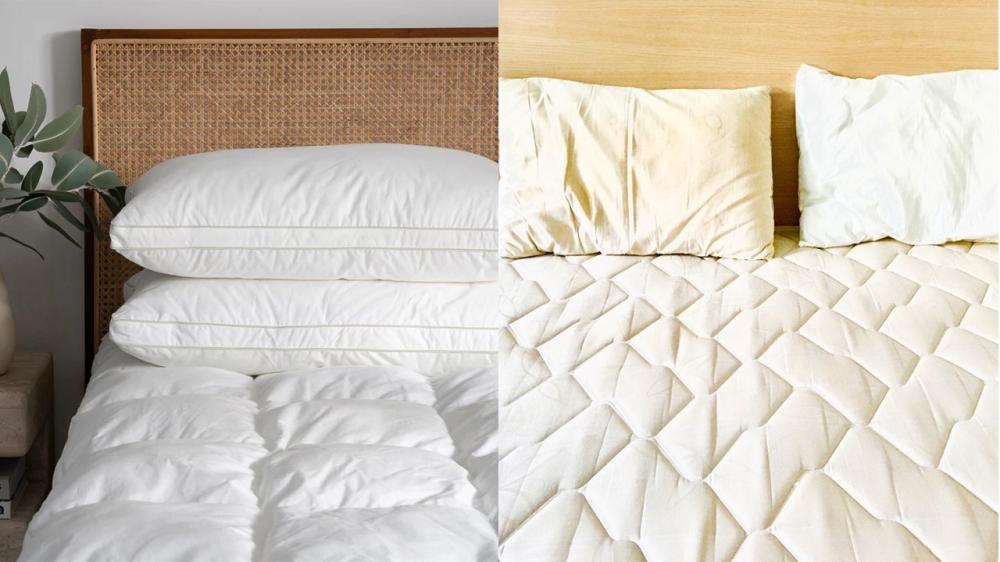
What Is the Best Pillow for Sleeping?
Finding the best pillow for sleeping is important for quality rest and maintaining proper spinal alignment. A good pillow supports your head, neck, and shoulders, adapting to your preferred sleep position and personal comfort preferences.
With countless options available—ranging from memory foam to down and everything in between—choosing the right pillow can feel overwhelming. This guide explores the factors that determine the best pillow for your needs, the different types of pillows available, and how to choose the one that promotes optimal sleep.
Why Choosing the Right Pillow Matters
A pillow does more than provide comfort; it plays a vital role in sleep quality and physical health. The right pillow will:
Support Proper Spinal Alignment: Keeps your neck, shoulders, and spine in a neutral position to prevent stiffness and pain.
Enhance Sleep Quality: Reduces tossing and turning by offering consistent support throughout the night.
Prevent Health Issues: Helps avoid neck pain, headaches, and allergies by providing adequate support and maintaining hygiene.
Choosing the wrong pillow, on the other hand, can lead to poor sleep posture, discomfort, and even long-term issues such as chronic pain or poor sleep quality.
Factors to Consider When Choosing the Best Pillow
1. Sleep Position
Your preferred sleep position is a key factor in selecting the right pillow:
Side Sleepers: Need a firm, thick pillow to fill the gap between the head and shoulders, ensuring proper neck alignment.
Back Sleepers: Require a medium-firm pillow that supports the natural curve of the neck without pushing the head too far forward.
Stomach Sleepers: Benefit from a soft, thin pillow to minimize strain on the neck and spine.
2. Pillow Fill Material
The fill material significantly affects the pillow’s comfort, support, and durability:
Memory Foam: Conforms to the shape of your head and neck, offering excellent support and pressure relief. Ideal for those with neck or shoulder pain.
Down and Feather: Soft and plush, providing a luxurious feel. Great for those who prefer a softer pillow, but may require regular fluffing.
Latex: Naturally hypoallergenic and resistant to dust mites, offering firm support and durability.
Polyester Fiberfill: A budget-friendly option that is soft, lightweight, and easy to care for, but may not be as durable as other materials.
Buckwheat: Filled with buckwheat hulls, providing firm, adjustable support. Ideal for those who prefer a more natural and breathable option.
3. Firmness Level
The right firmness level depends on your personal comfort and sleep position:
Soft Pillows: Best for stomach sleepers to reduce neck strain.
Medium-Firm Pillows: Suitable for back sleepers to maintain proper neck support.
Firm Pillows: Ideal for side sleepers to provide adequate support for the head and neck.
4. Temperature Regulation
If you’re a hot sleeper, look for pillows designed with cooling technology or breathable materials such as gel-infused memory foam or natural latex to help regulate temperature.
5. Allergen Resistance
For those with allergies, hypoallergenic pillows made from materials like latex, memory foam, or specially treated down can help minimize allergic reactions by resisting dust mites, mold, and other allergens.
Types of Pillows for Different Sleep Needs
1. Contour Pillows
Designed with an ergonomic shape to support the natural curve of the neck, making them ideal for back and side sleepers seeking pain relief.
2. Body Pillows
Long, full-body pillows that provide support for the entire body, ideal for side sleepers and pregnant individuals.
3. Adjustable Pillows
These allow users to add or remove filling to customize the pillow’s height and firmness, making them a versatile option for all sleep positions.
4. Cooling Pillows
Made with materials designed to dissipate heat and keep you cool throughout the night, perfect for hot sleepers.
5. Orthopedic Pillows
Specially designed to relieve specific issues like neck pain, snoring, or sleep apnea by providing targeted support.
How to Maintain Your Pillow for Longevity
Proper maintenance can extend the life of your pillow:
Use a Pillow Protector: Protects against moisture, dust, and allergens.
Wash Regularly: Follow the manufacturer’s care instructions to keep your pillow clean. Machine-washable pillows should be washed every few months.
Fluff Daily: Helps maintain the shape and support of the pillow.
Replace When Necessary: Replace your pillow every one to two years or sooner if it loses its shape or causes discomfort.
Conclusion
The best pillow for sleeping varies from person to person, depending on sleep position, personal preferences, and specific health needs. By considering factors such as pillow material, firmness level, and temperature regulation, you can find a pillow that enhances your sleep quality and promotes overall well-being. Prioritize comfort and support when choosing your next pillow to ensure restful, rejuvenating sleep every night.

